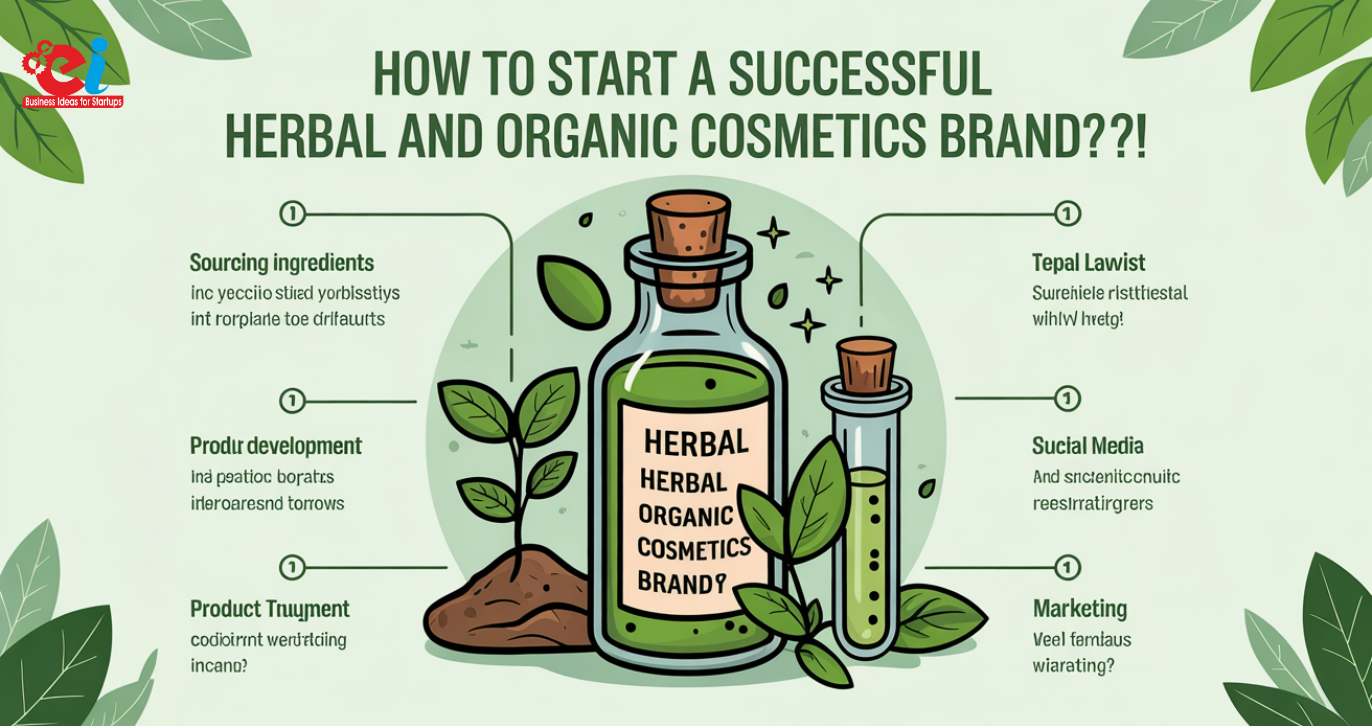The cosmetic shift has been a remarkable shift to a growing consumer awareness of skin health and environmental considerations, shifting tremendously towards Herbal and Organic Cosmetics. If you truly believe in natural skin care and intend to build a strong herbal and organic cosmetics brand, this guide will facilitate the way for you to become a successful herbal entrepreneur.
Steps to Start a Successful Herbal and Organic Cosmetics Brand
1. Market understanding
- Identifying the target audience of your products and their skincare needs.
- Understanding competitors and their respective products.
- Determining the demand for herbal and organic cosmetics.
2. Unique Selling Proposition (USP)
- Eco-friendly and sustainable packaging.
- Offering cruelty-free, vegan, and ethically sourced products.
Read More About : Ayurvedic Pain Killer Oil: Business Ideas in Herbal
3. Natural Ingredients Sourcing
- The suppliers have supplied either organic or pesticide-free raw materials to you.
- That your herbs and oils are sourced ethically and harvested sustainably!
- Be sure the ingredients will meet safety and quality standards.
4. Product Development
- Hire a qualified and experienced cosmetic chemist.
- Commercial test formulations repeatedly for safety, efficacy, and user experience.
- Work hard to limit the preservatives used while ensuring a reasonable shelf life.
5. Legal and Regulatory Compliance
- Compliance with the FDA, EU, or local cosmetics regulations.
- Certification for safety, cruelty-free, organic, and dermatologically tested labels.
- Correct ingredient listing and comply with ingredient transparency requirements.
6. Branding and Packaging
- Memorable brand names and logos should reflect your brand ethos.
- A strong brand message will be quite helpful.
- Biodegradable, recyclable, or reusable packaging for environmentally aware buyers.
7. Manufacturing and Production
- Manufacturing in-house gives control over quality but requires investments.
- Outsourcing production allows you to partner with an accredited manufacturer.
- Small-batch production is good for niche brands.
Also read: Biodegradable Mulching Film: The Eco-Friendly Answer for Agriculture
8. Establishing a Strong Customer Base
- Generate user content and testimonials to build credibility.
- Engage with customers through personalized emails.
- Carry out surveys and polls for their suggestions toward future products.
9. Scaling and Expansion of Your Brand
- On-road retail in high-end organic beauty stores.
- Joining with green and sustainable initiatives to link the brand with social causes.
- Limited or seasonal skincare kits to keep engagement with the customers high.
Challenges and How to Overcome Them
Starting an herbal and organic cosmetics brand is indeed fraught with challenges, but strategic planning can weather them:
• The wide competition-the way to make your brand different is by going for extremely unique formulations that are almost impossible to duplicate, ethically sourced ingredients, and impressive storytelling.
• Follow rules & regulations with the legal experts in terms of regulations, clearances, and certifications.
Future Trends in Herbal and Organic Cosmetics
The staying power of trends in making the brand competitive depends now on the had developed needs of consumers:
- Personalized Skincare: AI-improvement-driven with personalized customer herbal beauty routines.
- Waterless beauty: Highly concentrated formulas with less water both for sustainability and life-extension benefits.
- Minimalist skincare: Growing demand for multipurpose products to simplify skincare routines.
Closing Thoughts
To start a successful herbal and organic cosmetics brand, one needs a lot of dedication, research, and planning. Establishment in the booming natural beauty industry can come where quality becomes the driving priority of transparency and customer satisfaction. Right marketing, sustainable practice, and innovation will ensure that the brand flourishes to meet the increasing demand of clean beauty products globally. The initiation of this long journey must be followed by staying true to the values embraced by your brand while also living to the demands of changing market trends for future success.










